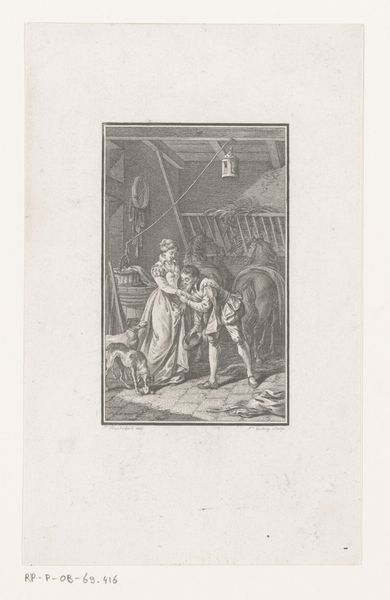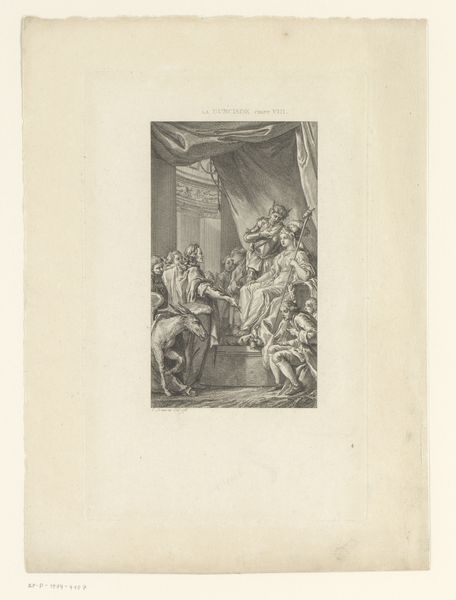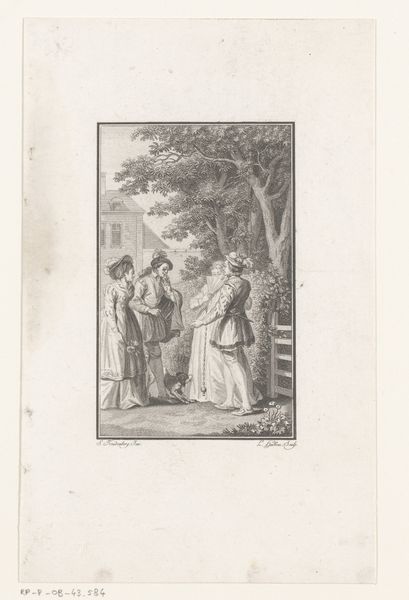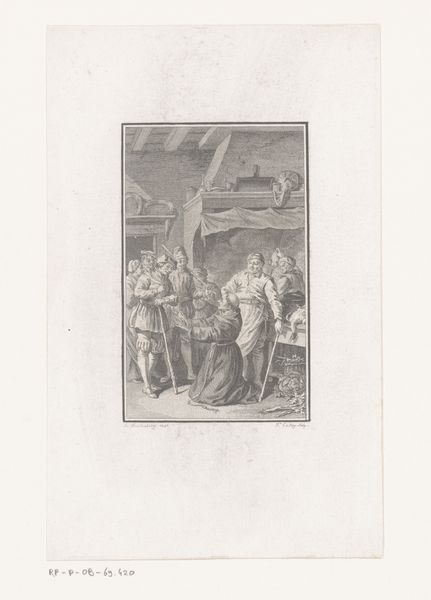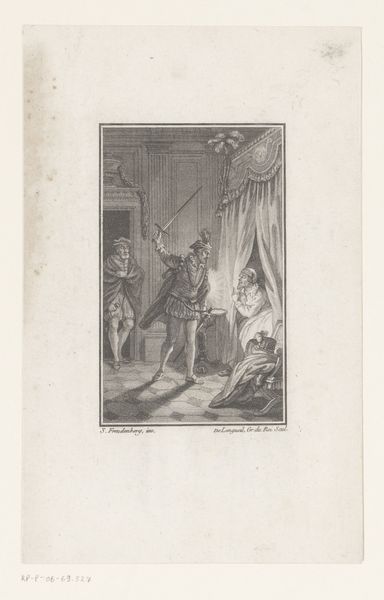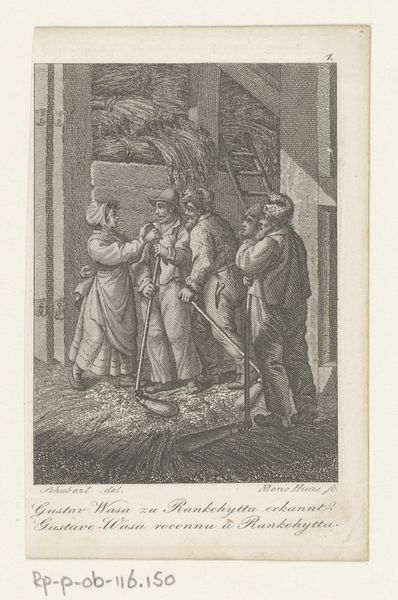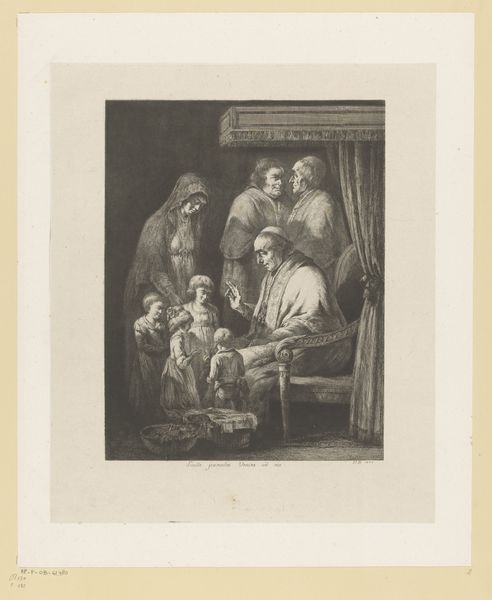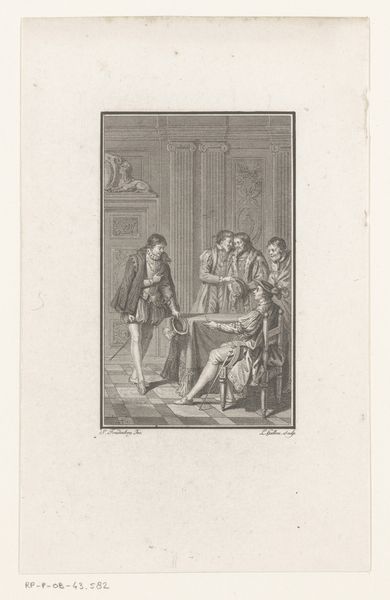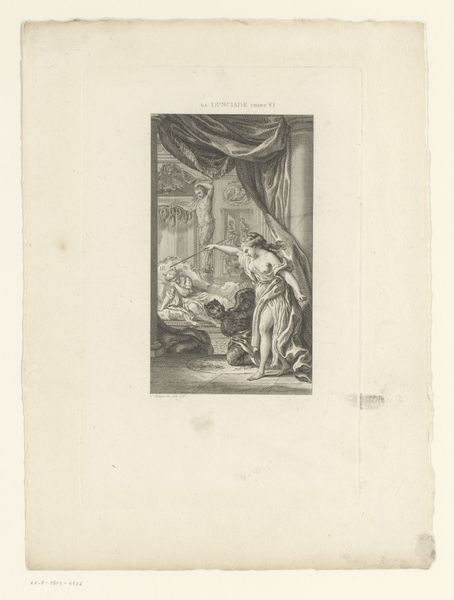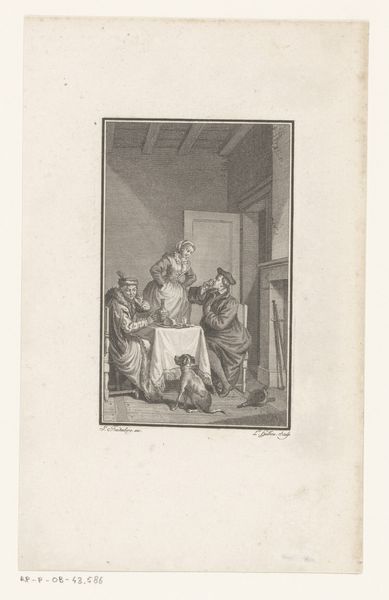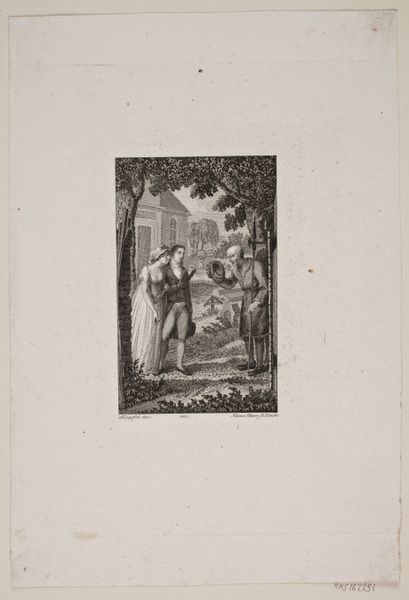
print, engraving
#
narrative-art
# print
#
landscape
#
figuration
#
romanticism
#
genre-painting
#
engraving
Dimensions: height 228 mm, width 135 mm
Copyright: Rijks Museum: Open Domain
Editor: This is “Man verwelkomt een gezin bij zijn schip,” or "Man Welcoming a Family to his Ship," an engraving by Daniël (I) Veelwaard, created sometime between 1777 and 1818. The scene feels incredibly staged, almost theatrical. What stories do you think are embedded in an image like this? Curator: What I see are the echoes of societal expectations, meticulously etched into the copper. Consider the welcoming figure, poised as a benevolent patriarch. He embodies the ideals of his era – order, civility, and the perceived natural hierarchy. Notice how the family approaches – the young daughter at the forefront, a symbol of innocence and future promise. It speaks volumes about the roles ascribed to women and children in 18th-century Dutch society. What feelings does the family evoke in you? Editor: There's something performative about it. The father looks dignified, the mother composed. Almost too perfect. Like they’re acting out a scene. Does that hint at some specific social commentary? Curator: It might. Ask yourself what it meant to present such a tableau. Perhaps Veelwaard is playing with notions of virtue and prosperity, crafting an aspirational image for the emerging middle class. Consider the ship, not merely a vessel, but a symbol of Dutch power, exploration, and economic prowess. The family's arrival suggests participation in this larger narrative. This all resonates within a shared cultural understanding. Editor: It's like the image is communicating something about national identity too, beyond just a simple greeting. It's powerful how much meaning is packed into what seems like a quiet, domestic scene. Curator: Exactly! Visual language like this actively shapes collective memory. Through his use of symbolism, Veelwaard is not just showing us a scene, but reminding us of who we are, or, more precisely, who we are meant to be. Editor: I never thought about it that way before, that images aren't just passive reflections but active participants in shaping how we see ourselves. Thanks for broadening my understanding!
Comments
No comments
Be the first to comment and join the conversation on the ultimate creative platform.
